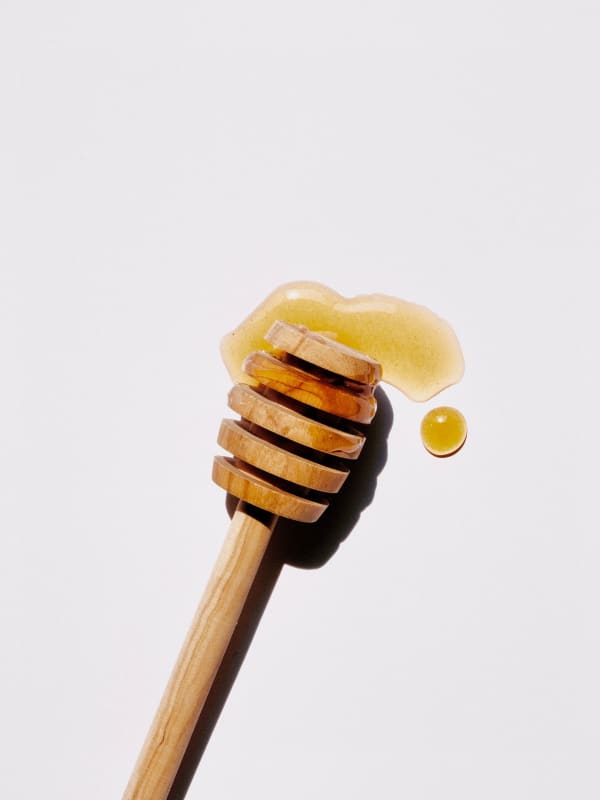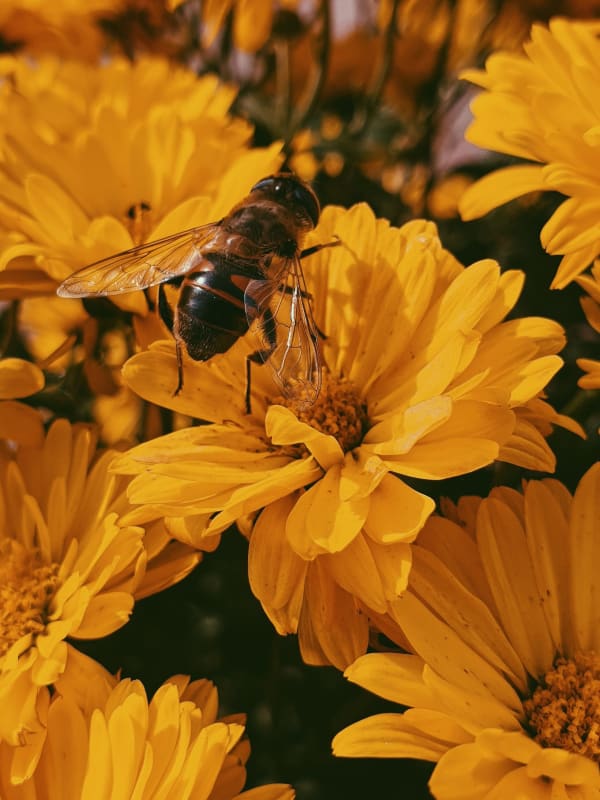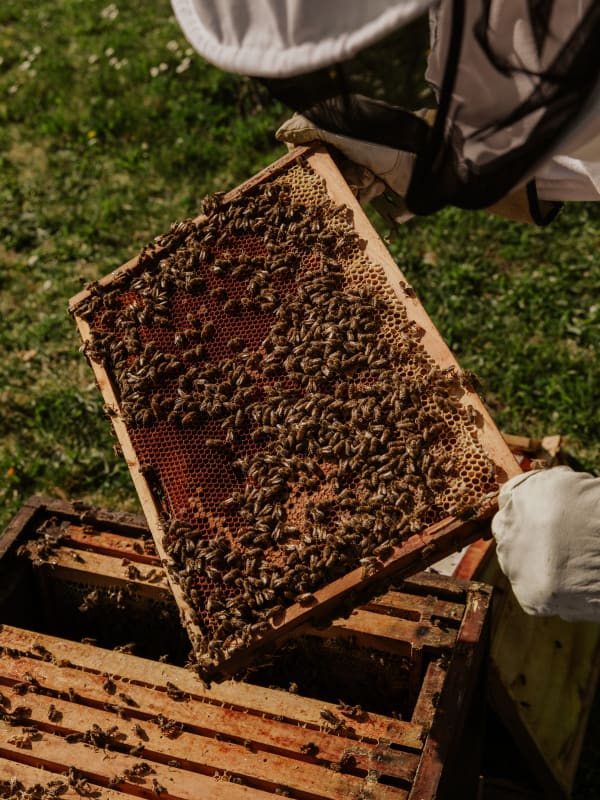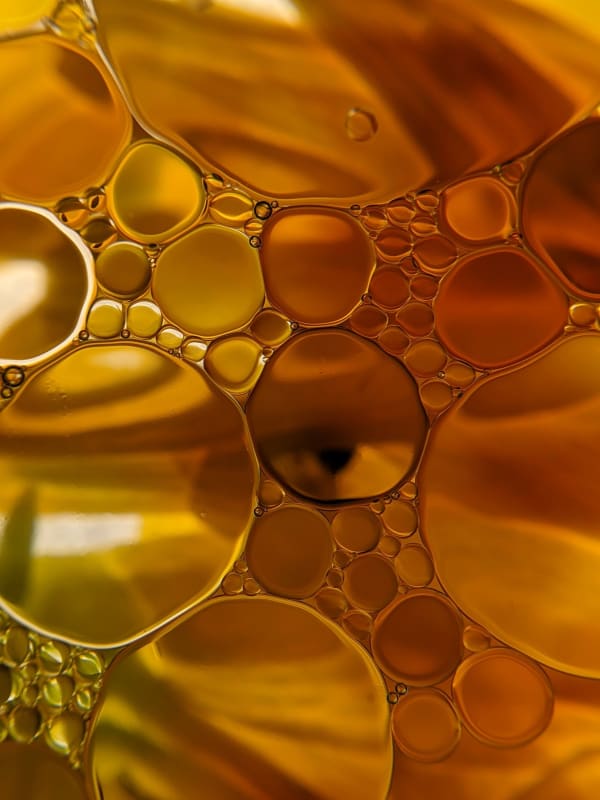al Somal, N., Coley, K. E., Molan, P. C., & Hancock, B. M. (1994). Susceptibility of Helicobacter pylori to the antibacterial activity of manuka honey. Journal of the Royal Society of Medicine, 87(1), 9–12. https://doi.org/10.1177/014107689408700106
Altman, N. (2010). The Honey Prescription: The amazing power of honey as medicine. Retrieved March 3, 2023, from https://www.amazon.com/Honey-Prescription-Amazing-Power-Medicine/dp/1594773467
Andualem B. (2013). Combined antibacterial activity of stingless bee (Apis mellipodae) honey and garlic (Allium sativum) extracts against standard and clinical pathogenic bacteria. Asian Pacific journal of tropical biomedicine, 3(9), 725–731. https://doi.org/10.1016/S2221-1691(13)60146-X
Banaeian-Borujeni, S., Mobini, G. R., Pourgheysari, B., & Validi, M. (2013). Comparison of the effect of honey and miconazole against Candida albicans in vitro. Advanced biomedical research, 2, 57. https://doi.org/10.4103/2277-9175.115800
Carter, D. A., Blair, S. E., Cokcetin, N. N., Bouzo, D., Brooks, P., Schothauer, R., & Harry, E. J. (2016). Therapeutic Manuka Honey: No Longer So Alternative. Frontiers in microbiology, 7, 569. https://doi.org/10.3389/fmicb.2016.00569
Carvalho, C. M., Meirinho, S., Estevinho, M. L. F., & Choupina, A. (n.d.). Yeast species associated with honey: Different identification methods. Retrieved March 3, 2023, from https://www.researchgate.net/publication/288352904_Yeast_species_
associated_with_honey_different_identification_methods
Deng, J., Liu, R., Lu, Q., Hao, P., Xu, A., Zhang, J., & Tan, J. (2018). Biochemical properties, antibacterial and cellular antioxidant activities of buckwheat honey in comparison to manuka honey. Food chemistry, 252, 243–249. https://doi.org/10.1016/j.foodchem.2018.01.115
Dezmirean, G. I., Mărghitaş, L. A., Bobiş, O., Dezmirean, D. S., Bonta, V., & Erler, S. (2012). Botanical origin causes changes in nutritional profile and antioxidant activity of fermented products obtained from Honey. Journal of Agricultural and Food Chemistry, 60(32), 8028–8035. https://doi.org/10.1021/jf3022282
Geiling, N. (2013, August 22). The Science Behind Honey's Eternal Shelf Life. Smithsonian Magazine. Retrieved March 3, 2023, from https://www.smithsonianmag.com/science-nature/the-science-behind-honeys-eternal-shelf-life-1218690/?no-ist
Glucina, L. (2022, January 11). Fermented Garlic Honey. Ascension Kitchen. Retrieved March 3, 2023, from https://ascensionkitchen.com/fermented-garlic-honey/
Ilse Knatz Ortabasi. (2010, June 17). Honey Bees - Natural history 1. YouTube. Retrieved March 3, 2023, from https://www.youtube.com/watch?v=x7cX2cjFunw
Ilse Knatz Ortabasi. (2010, June 17). Honey Bees - Natural history 2. YouTube. Retrieved March 3, 2023, from https://www.youtube.com/watch?v=VsCmSWoF8PY
Insider Business. (2019, May 25). Why mānuka honey is so expensive | so expensive. YouTube. Retrieved March 3, 2023, from https://www.youtube.com/watch?v=j6bGZXk6F2E
Irish, J., Carter, D. A., Shokohi, T., & Blair, S. E. (2006). Honey has an antifungal effect agains candida species. Medical Mycology, 44(3), 289–291. https://doi.org/10.1080/13693780500417037
Johnston, M., McBride, M., Dahiya, D., Owusu-Apenten, R., & Nigam, P. S. (2018). Antibacterial activity of Manuka honey and its components: An overview. AIMS microbiology, 4(4), 655–664. https://doi.org/10.3934/microbiol.2018.4.655
Kilty, S. J., Duval, M., Chan, F. T., Ferris, W., & Slinger, R. (2011). Methylglyoxal: (active agent of manuka honey) in vitro activity against bacterial biofilms. International forum of allergy & rhinology, 1(5), 348–350. https://doi.org/10.1002/alr.20073
Lane, J., Calonne, J., Slattery, H., & Hickey, R. M. (2019). Oligosaccharides isolated from MGO™ manuka honey inhibit the adhesion of pseudomonas aeruginosa, escherichia coli O157:H7 and Staphylococcus aureus to human HT-29 cells. Foods, 8(10), 446. https://doi.org/10.3390/foods8100446
Lu, J., Turnbull, L., Burke, C. M., Liu, M., Carter, D. A., Schlothauer, R. C., Whitchurch, C. B., & Harry, E. J. (2014). Manuka-type honeys can eradicate biofilms produced by Staphylococcus aureus strains with different biofilm-forming abilities. PeerJ, 2, e326. https://doi.org/10.7717/peerj.326
MacPherson, R. (2022, October 7). Why you should add oligosaccharides to your diet. Verywell Fit. Retrieved March 3, 2023, from https://www.verywellfit.com/oligosaccharides-and-prebiotics-health-benefits-2242223
Mohan, A., Quek, S.-Y., Gutierrez-Maddox, N., Gao, Y., & Shu, Q. (2017). Effect of honey in improving the gut microbial balance. Food Quality and Safety, 1(2), 107–115. https://doi.org/10.1093/fqsafe/fyx015
Moussa, A., Noureddine, D., Saad, A., Abdelmelek, M., & Abdelkader, B. (2012). Antifungal activity of four honeys of different types from Algeria against pathogenic yeast: Candida albicans and Rhodotorula sp. Asian Pacific journal of tropical biomedicine, 2(7), 554–557. https://doi.org/10.1016/S2221-1691(12)60096-3
Nep Tech. (2018, December 12). How honey bees pass through life and death. YouTube. Retrieved March 3, 2023, from https://www.youtube.com/watch?v=TSS1wyZBTi0
Osato, M. S., Reddy, S. G., & Graham, D. Y. (1999). Osmotic effect of honey on growth and viability of Helicobacter pylori. Digestive diseases and sciences, 44(3), 462–464. https://doi.org/10.1023/a:1026676517213
Shahzad, A., & Cohrs, R. J. (2012). In vitro antiviral activity of honey against varicella zoster virus (VZV): A translational medicine study for potential remedy for shingles. Translational biomedicine, 3(2), 2. https://doi.org/10.3823/434





